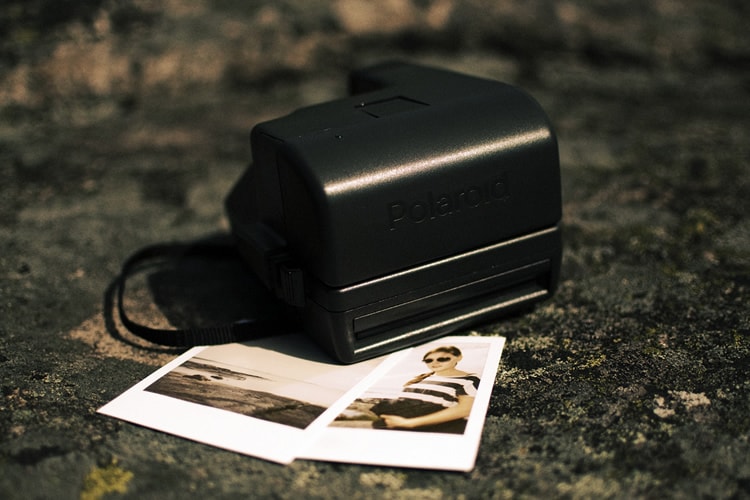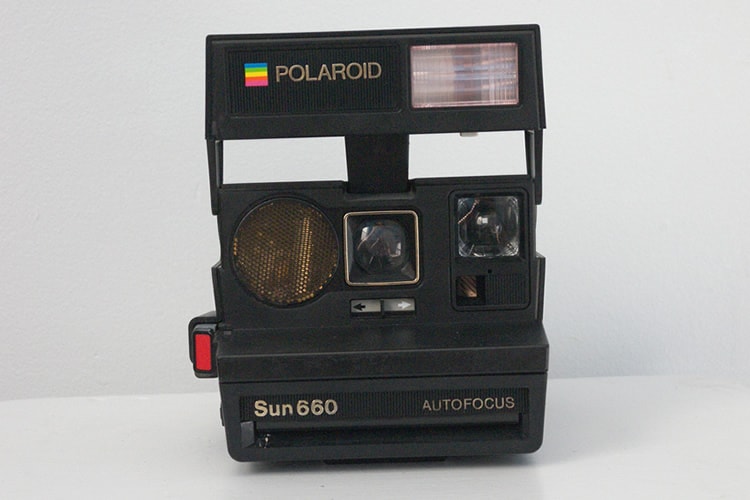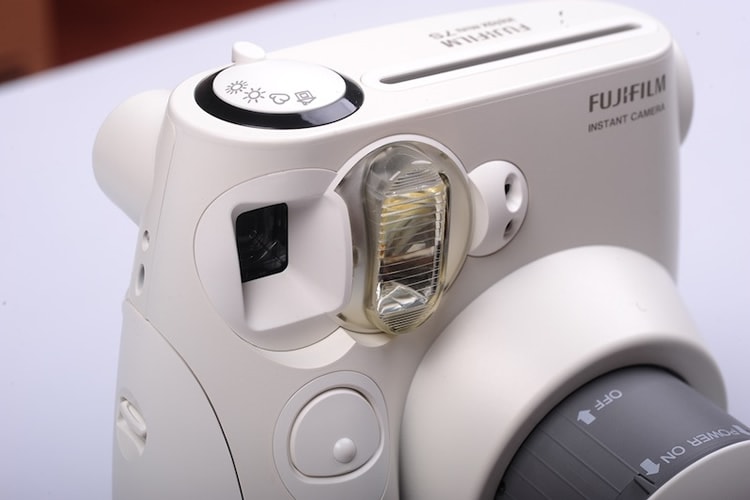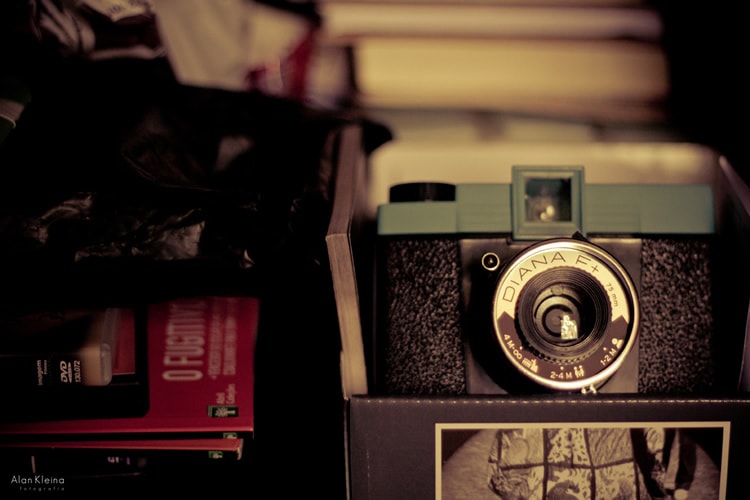Getting More Serious About Polaroid Photography (A Complete Guide)
Instant cameras, cameras that use self-developing film to generate images, and the instantaneous film that they use are colloquially referred to as polaroids.
Polaroid photography is generally not taken as professionally as digital and other analog formats, but with the right equipment and framework, instant photography can become just as viable an art form as any other.
The obvious appeal of instant film is its inherent novelty of instantaneous self-developing film. A digital photographic workflow involves transferring and editing and finally printing files while analog photos take even more time and effort to print working in the darkroom. With polaroids, you simply need to press the shutter, and then just wait for a few minutes for the film to develop on its own via chemical processes in the material.

photo by Moises Lizarraga
But instant film has many advantages to it besides pure convenience and time-saving. It’s not unreasonable to see a polaroid camera as ideal equipment for a photojournalist; no camera gets you more into the moment than a polaroid, and your shots are completely untainted from editing and manipulation, making your photos completely truthful and free from debate and accusation.
What if you’re hired to take photos at a party? Sure, you can use your DSLR and fancy strobe flash, upload the photos on Facebook and tag everyone you know, but try taking a polaroid next time. Snap your shot, scan the film quickly using a portable scanner, many of which are available and reasonably priced, and then give the polaroid film itself to the partygoer you took the photo of. Polaroids are a nostalgic, one-of-a-kind present, and you’ll find that many if not most people would prefer to have a polaroid of a moment to hold onto and keep than to see a bunch of digital shots on Facebook. Besides, having scanned it, you’ll be able to share it and make as many digital reprints as you want.
You can use the polaroid film itself as a stylistic aesthetic too. The trademark white backgrounds around your pictures on polaroids can be used to create great-looking negative spaces for a larger presentation. And you’ll find that many polaroid cameras have their own unique characteristics in their pictures specific to their models as all analog film cameras do. Many days can be spent traversing various thrift stores looking for the right polaroid and look to add to your collection.

photo by Johan Blomström
Instant photography does have its limitations. While many people will have inherited old Polaroids that are more than likely functional, it’s not the type of camera that someone just getting into photography should seek out. Beginners in photography should practice their skills using a digital or more conventional film camera before focusing more on instant film. One of Polaroid’s biggest issues is that instant film formats are becoming increasingly rare to find. Only a few types of instant film are continuing to be produced, while most of the film formats that may have been ubiquitous decades ago have been exhausted and are now extinct. For certain films that might be held in a closer place in a nostalgic user’s heart than others, even expired film rolls can be sold at very high prices.
Because of this relatively rare supply of instant film that is out there nowadays, you should wait until you’ve developed a good and quick eye for composition to minimize the amount of wasted or unusable shots. It would be wise to transition to using a polaroid camera after you’ve practiced digital or analog photography for a bit.
Despite the growing digital age and increasing number of film types becoming extinct, there are still many options for instant film cameras on the market today. Polaroid stopped producing film back in 2009, but a few former polaroid employees came together to buy the last remaining polaroid factory in the world. Fortunately, this factory sole survivor is doing very well, as the polaroid market is still very viable. At their website, several different camera models and bundles are available for purchase, as well as color and black-and-white film available for all their camera models.

Polaroid SX-70 photo by Gary Pearce
An extremely popular polaroid model, and for good reason, is the foldable Polaroid SX-70. It is actually a single lens reflex camera, and so it offers much higher quality and control than your typical kiosk and convenience store polaroid. The Impossible Project offers black-and-white and color film for the SX-70 as well as the remakes of the original SX-70 from the 70s as well as the later ‘sonar‘ version that was offered.
The SX-70 sonar model featured an autofocus system that could be switched off for manual use. This is extremely useful for dark environments where focusing will be more difficult. The SX-70 uses automatic variable shutter speed and aperture setting, so the only function the photographer performs is focusing. With the automatic adjustments, the SX-70 truly becomes a camera to be used in and for the moment, though it is fully capable at taking premeditated and conceptual photos. The lens is 116 mm and has an aperture of f/8, and there are even photo-manipulation options available for the film via manual pressing. The SX-70, as an SLR, is the polaroid camera to use for those who want to go about instant film in a more professional setting. As such, the camera is not cheap, actually about as expensive as an entry level DSLR at around $320.00. As for the film? A pack of 8 exposures will run you $24.00, and a three-pack of of that is $67.00. This is not a camera for commercial or mainstream photography work unless you’re using it for its specific style. Of course you can probably find cheaper alternatives on Amazon.
The Impossible Project offers a few other and specialized types of polaroid cameras as well. Macro photography can be can be performed at high quality with the Polaroid Macro 5 camera at $200, while models like the Polaroid Spectra Camera and Sun 660 are more like your typical polaroid cameras in that they only have full autofocus available and do not have folding bodies but are more affordable.

Polaroid SX-70 photo by Terri Monahan
There’s more flexibility in instant film if you’re willing or wanting to shoot in mini instant film, an option that’s becoming more and more frequent in the latest polaroid cameras. Both Polaroid and Fujifilm have had new polaroid models released in recent years, and many of their latest cameras rely on mini instax film, which can be found more much easily and cheaply than film for the SX-70 or other The Impossible Project Cameras. Polaroid and Fujifilm’s cameras are very affordable, ranging from $50 to $200, with some even offering digital capabilities and features as well. However, these cameras don’t have the analog aesthetic that the classic polaroid inventions do that The Impossible Project offers, and it is less about the art form of the polaroid and more about the convenience with these cameras. However, purchasing one of these more conventional polaroids makes instant photography much more accessible as both the equipment and film is much cheaper than The Impossible Project’s products.
For those who wish to pursue instant film for the novelty of it rather than a unique analog style should go through Polaroid or Fujifilm and buy one of their models, which are even available in most electronics or convenience stores.

image by Hung Le
While the most control you might have over the camera itself is its focus, you still must perform other functions properly in order to get the most out of it. You should be able to hold the camera steady when you take the photo, being careful not to move or shake the the camera when you press or depress the shutter. The Polaroid SX-70 camera offers shutter speeds from 1/175th of a second to over 10 seconds. Because the shutter speed and aperture are automatically adjusted, you don’t know for sure how long the shutter will stay open until after you take the photo. However, you’ll be able to get a rough estimate of how long with the lighting conditions. If it’s in daylight or a bright room, the SX-70 will operate with a very fast shutter speed, such as 1/120th of a second. A typical person will be able to hold a camera steady during a picture for about 1/60th of a second, so there typically won’t be as many blurry or out-of-focus photos from camera movement. In low-light conditions, the SX-70 might adjust to 1/30th or 1/20th of a second, which is still very doable for most people, but requires a greater amount of concentration and discipline than higher shutter speeds.
In very dark environments, the photo may need an exposure of several seconds or higher, which will require the use of some external stability as in a tripod. Flash accessories are offered for the SX-70 and other polaroids though, which are a necessity if you’ll be working constantly in low-light situations like if you’re taking photos at a party.
However, if you choose to use Fuji mini instax film, which has an image size of 2.13” by 3.4” and is priced at $13 for a twin-pack of ten exposures at Amazon, you could purchase a Diana F+ lomography camera or its dozens of clones from Lomography for about $90 here. The Diana F+ models are remakes of the original 120mm format Hong Kong cameras from the 70’s, and they have been beloved by a cult following practically as large as Polaroid’s itself. You’ll see a dreamy aesthetic, vignetting, and more unique stylistic characteristics inherent to the Diana F+ in its photos, and if you purchase its Instant Back accessory here, also for $90, you can remove the back of the camera and attach this accessory so you can take photos and instantly print them out on Fuji’s mini instax film.

image by Alan Kleina Mendes
The Diana F+ offers more control and versatility than Polaroid’s SX-70; it offers four adjustable exposure modes corresponding to different lighting / weather conditions, two shutter speed modes (One for daytime / flash and one for indoors / night photography) as well as manual shutter speed function (however long you hold the shutter lever down is how long it stays open) as well as a shutter lock (So the shutter can stay open on its own use with a tripod), manual focus, and a pinhole function. However, the only instant film it’s compatible with is Fuji’s mini instax film, which is too small for most commercial or exhibition purposes. However, the film looks great and can be enlarged as you can take very sharp photos with it. Both the Polaroid SX-70 and the Diana F+ are extremely good investments, so a photographer who wants to really incorporate instant film into his work might choose to get both and maybe even develop a collection of polaroids as many analog photographers do.

image by Rachel Wilder
However or whatever you wish to take your photos with, you will still end up with just one physical product, just one polaroid picture. This makes polaroids special in a way. Polaroids become true mementoes, and if the picture’s an art piece, a polaroid would be just as if not even more valuable than an original 35mm negative. A polaroid can be given as a gift, one more valuable than a digital photo because there is and can only be one polaroid.
But in most cases, you’d probably want to ensure the lifespan of your photography work by having digital copies backed up. There are a plethora of options available that’ll transfer your instant film into digital recreations with picture-perfect quality. Polaroid offers a portable wand-scanner with wi-fi here that’ll scan any color or black-and-white documents and images in an instant for $90. You can also use any high-quality photo scanner, or even just the scanner built-in your home printer if it’s modern enough for still very clear images. With polaroid cameras, though, you should get a portable scanner, as the mobility will allow you to keep the convenience and instantaneous satisfaction polaroids offer.
Conclusion
By now, you’ve garnered more than enough information to dive into instant film photography well-informed and wisely. There are many instant film options available for all types of photographers with all types of budgets, and many reasons to choose to invest into a polaroid and its many available accessories.
Polaroids have a natural nostalgic appeal to them, and so people are consequently much more natural and comfortable around a polaroid camera than a DSLR. There’s no doubt that there’s a spark in using instant film that digital and conventional analog photography just lack, and fortunately for everyone, there’s a relentless community of instant film photographers growing every day keeping it alive and well.
